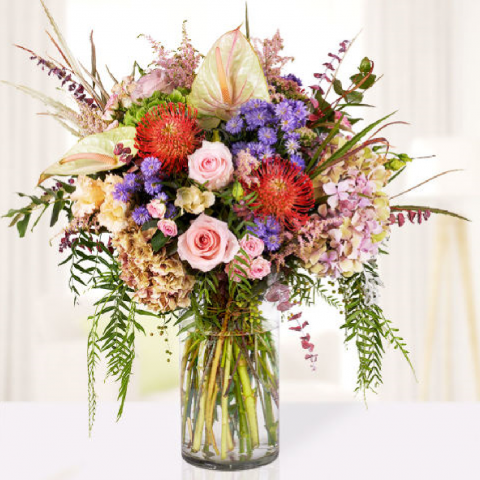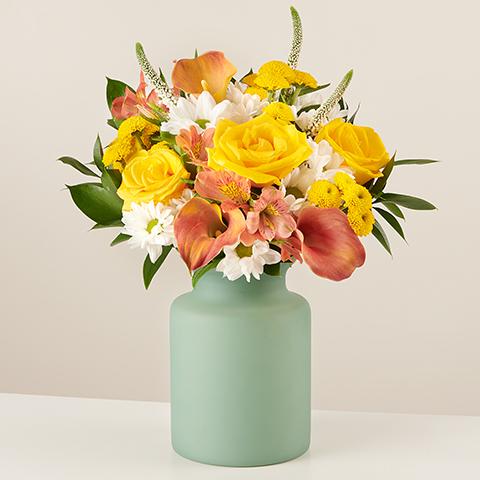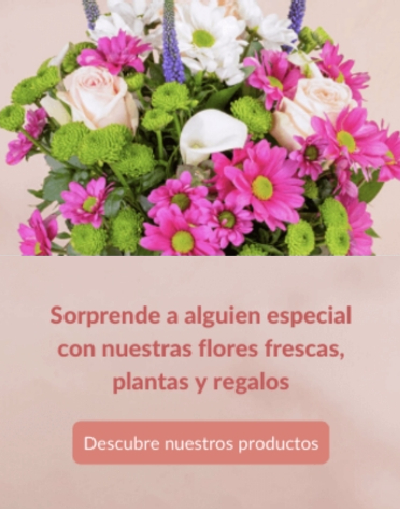Knowing the life expectancy of a flower is a helpful guide to planning your garden. It ensures a constant bloom to know when plants might die so there are no bare spots in the garden. There are three main categories plants are divided into in terms of life expectancy. These categories are annual, biennial and perennial. Yet, within the perennial group, are subgroups to classify plants more specifically. The names of these groups confuse some growers as they are not as self-explanatory as one may think. Plants have the potential to be classified into different categories based on climate. Unseasonably cold or long periods of cold as well as unusual hot streaks can affect a plant. Weather permitting, some biennials can be treated as an annual. See below for more detailed information.
Today, in this article, we are going to learn more about the types of flowers:
* Annual Flowers
* Biennial Flowers
* Perennial Flowers
* Why Location Matters
Annual Flowers
Most think the term ‘annual’ refers to flowers that bloom once every year. This is not the case. An annual flower is one that grows, blooms and dies within one year. It is then necessary to replant more flowers in that area if more blooms are desired. Even though annuals only survive one year, they tend to have a longer blooming period. For that reason, they are a beloved category. Another reason annual flowers are sought after is that they don’t have a long term commitment due to their short life cycle. It allows you to quickly change the theme of your garden without much time, money, or effort.
Some varieties produce seeds once the blooms die. Collect the seeds and plant them in a spot of your choosing. If the seeds are not collected, they drop on the ground or get carried in the wind. Wherever they end up, a new plant grows in that spot. An example of an annual flower is marigolds. Even in warmer regions, where there is no frost, marigolds don’t have a longer life expectancy. Instead, they continue to bloom throughout the winter but still fade away and die within the year. Marigolds self-seed giving them the potential to come back the following year. This is why marigolds are often miscategorized and put into the perennial family.
Biennial Flowers
A biennial plant or flower is one that has a two-year life cycle before dying. It is a misconception to think that these are plants that bloom twice a year. It is also thought by many that only foliage grows the first year. However, so much more is going on. The root structure, stem, as well as food storage organs are created the first year and play an important role in a healthy plant.
Generally, biennial plants are dormant through the winter. During this time, the tops of the plants die back. Once the blooms are spent and the seed production has come to a halt, the plant dies. This occurs in the second year. Some plants, when exposed to cold conditions early on, are able to produce seed the first year of life. The forget-me-not flowers are the perfect, well-known example of a biennial flower. The flowers don’t appear until the second year, which is also when the seed arrives.
Perennial Flowers
Perennials have more to talk about because they have subgroups within the main perennial family. As a whole, perennials continue to grow until the plant has reached maturity. These plants regrow every season lasting longer than annuals and biennial combined. Though the bloom period is generally shorter, the perennials, in general, are hardier. This means you can maintain the perennial you have got and not have to worry about replanting each season. Within the perennial category, are subgroups to describe plants more specifically. The dormancy phase is usually in the winter or fall, depending on the climate at the time.
Deciduous perennials are plants that drop their foliage before entering their dormancy period through the winter. these perennial varieties do not die back to the ground but keep their branches and structure. Geraniums are an example of deciduous perennials. With a mild winter, these flowers bloom all year. If you experience a cold winter or frost, this is the only time the flowers disappear.
Herbaceous perennials are plants that die back to the ground during their dormancy phase. This is because these plants have a softer, less fibrous stem. The roots and bulbs underground survive and regrow. The Luna Hibiscus is an example of an herbaceous perennial that dies back to the ground in the winter. Come springtime, when the soil warms up, new growth will appear.
Semi-deciduous plants don’t lose all of their foliage. They drop some of their leaves over a short period of time. Generally, new growth appears where old leaves have dropped. An example of a flower belonging in this category is the hydrangea. Hydrangeas grow in multiple continents under various conditions. This means the dropping of the leaves can occur at slightly different times but generally occurs in the late fall or early winter.
Why Location Matters
The location where a flower is planted impacts the way it grows. For example, in colder regions, lantanas die back during frost and are therefore categorized as an annual. In warmer regions, it is grown as a perennial since there is no frost, meaning the lantana does not go into dormancy. These flowers last many years, making it a perennial. Another plant that acts as an annual in colder areas but a perennial in warmer climates are begonias.
Flowers react to their climate. It makes it complicated to create a rule as to how to classify plants as there are always exceptions. It is hard to have concise rules in which a flower belongs for this reason. Know your own climate, how the flowers grow in that climate and plant your garden accordingly.







